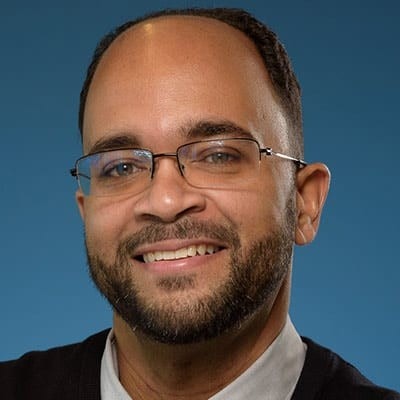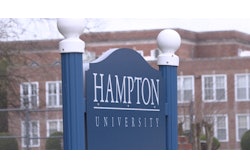 Dr. Tyrone Freeman, associate professor of philanthropic studies at the Indiana University Lilly Family School of Philanthropy
Dr. Tyrone Freeman, associate professor of philanthropic studies at the Indiana University Lilly Family School of Philanthropy
“The advancement field is going crazy about engaging communities of color, and I remember when nobody cared, so this is definitely a good pivot,” said Dr. Tyrone Freeman, an associate professor of philanthropic studies at the Indiana University Lilly Family School of Philanthropy. “A lot of organizations are thinking about what they need to do differently now.”
And what they need to do differently, Freeman and fellow experts say, involves redefining what fundraising success looks like, debunking myths around who gives, and working in development offices themselves to recruit and retain fundraisers from underrepresented groups in this mostly white field.
“How to build an inclusive donor base is a complicated question because we can’t get away from the fact that where money is held in the U.S. is in the hands of white, wealthy, heterosexual men, who have the vast majority of wealth,” said Dr. Noah Drezner, professor of higher education at Teachers College of Columbia University. “So, when you’re an advancement officer being told you need to raise the most money, those are the people you’ll be tapping.”
Misa Lobato, director of prospect management and analytics at the Rhode Island School of Design (RISD), has noticed the same problem in her work and wants donor diversification seen as the urgent issue that it is.
“Every school I’ve worked for has faced the same issue: working with fewer donors who are giving larger amounts,” she said. “But we’re not broadening our donor base. We have declining alumni engagement. So, we’re getting into a situation where we are highly reliant on a few very wealthy donors. I’m not sure that’s sustainable. And even if it were sustainable, is that the kind of community engagement we want? Is that really meeting the goals of philanthropy?”
Freeman referred to his article “A Complicated Love” to highlight part of this problem. In the piece, he described a Latinx graduate of a predominantly white school who was active in alumni clubs. But in the roughly 20 years since he graduated, no one from the school’s advancement office had ever contacted him.
“There is a lot of love for alma mater out there from alumni of color, yet the institutions get in the way of that because they’re often not engaging with them, not reaching out to them,” said Freeman. “There’s this whole untapped pool of people who don’t feel seen.”
Lobato also pointed to a recent report from The Donors of Color Network, a nonprofit focused on building community among high net worth donors of color, which found that about 14% of all millionaire households in the U.S. are led by a person of color.
“We have not even underestimated but not acknowledged the amount of influence, access, and opportunities that are granted to donors,” said Lobato. “And we’ve not intentionally cultivated diverse donor pools. In that way, we are being exclusionary in a lot of our work.”
She noted this exclusion carries consequences for students, such as in how scholarships are designed for students from historically underrepresented groups. As a Latina who grew up in an economically depressed and rural area, Lobato drew on her own experience as a scholarship recipient in college. But she said close monitoring of her academic performance as a condition of her funding felt demoralizing. Perhaps if people with backgrounds like hers had helped shape her scholarship, she may have felt more encouraged.
"I think that is one of the substantial limitations of having a philanthropic model that allows a few people to influence things like how a scholarship works," said Lobato.
But to diversify donors with various lived experiences, Drezner said another problem is that universities need to change how they think about fundraising success.
“The way we’ve set advancement up right now is to be very metric-driven,” he said. “And these metrics are in the here-and-now. What are you raising for this fiscal year? Or at best, in the next five or ten years? That does not allow people to say, what are you doing to build the donor base today that will be the donor base of tomorrow or a generation from now? If we think in the here-and-now, then we’re not going to get there.”
Drezner and Lobato added that making advancement offices themselves more welcoming and diverse spaces without tokenizing underrepresented groups is a key part of these inclusion efforts.
The Council for Advancement and Support of Education (CASE), a global nonprofit association for educational advancement professionals, found that fundraisers are mostly white women, yet those in development leadership are mostly white men. Reports have also shown that turnover among fundraisers continues to be high, particularly among fundraisers of color.
“I think part of the issue is we might bring in a person of color, and they’re working a portfolio of white donors, some of whom may be hostile to their own rights,” said Lobato. “I spoke with a Latina fundraiser at a college in Texas who met with donors talking about their support for building the U.S.-Mexico border wall. It was a very awful situation for her to be in.”
Freeman added that development offices need to catch up to the changing demographics of the country, their students, and their alumni. Communities of color are making up more and more of the students and alumni, yet the university fundraising field and its leadership do not reflect this.
“People in the minority are used to trying to adapt to the dominant culture, whatever that is, but the racial reckoning is saying no, that dominant culture needs to change,” said Freeman. “Stop putting the burden on those in the minority. I think there is a greater awareness of this, but there is still a lot more work to do.”
Rebecca Kelliher can be reached at [email protected]
















